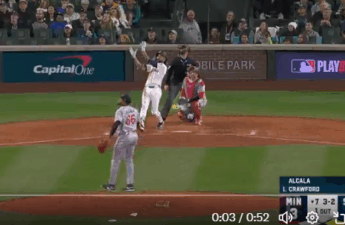“Sitting on a sofa on a Sunday afternoon,
Going to the candidates’ debate
Laugh about it, shout about it, when you’ve got to choose
Every way you look at it, you lose.
Where have you gone, Joe DiMaggio,
A nation turns its lonely eyes to you.
Woo woo woo.
What’s that you say, Mrs. Robinson?
Joltin’ Joe has left and gone away.
Hey hey hey.
Hey hey hey.”
-Simon & Garfunkel, “Mrs. Robinson”
They say that in the past, toward the end of the last Depression, when baseball was America and people needed a hero, people had only one question for each other in the spring of 1941: “Did he get one today?”
The question was about Joe DiMaggio and whether he had extended his hitting streak.
In the future, if we ever get there, I have long maintained that those in my generation will have only one question for each other in our twilight years. “How many have you had?”
The question will be about the number of cancers we’ve each survived.
In this interim period, somewhere between 1941 and 2041, we are in the midst of the slowest, most methodical stock market crash in world history. No one is out in the streets marching to the titular chant, but the only question of note for those financially inclined, aware, or concerned, should be as it says: “How many hundreds down today?”
I’ve read a lot in the last week about “market analysis”. A co-worker walked in yesterday morning with a freshly printed oversize sheet from her retirement planners displaying full-color charts of how the market always goes up, forever and ever Amen, despite dips and splutters just like this one. Everyone’s just chomping at the bit to “call a bottom”, “get in on the ground floor”, and “buy low”.
There’s another element of the discussion, one that revolves around so-called “capitulation”. That when everyone gets enough fear in them, enough panic selling occurs, and enough people call their broker screaming “sell it all!”, we can finally transition back into the slow, steady, stair-climbing growth that supposedly defines stock markets. Because there will be no one left who wants to sell.
I humbly submit that the two paragraphs above are in diametric conflict with each other, and together they combine to be the complete illustration of the anatomy of a slow crash, or perhaps even a Permanent Crash State. Every morning, CNN runs the headline “Stocks Set to Rebound”. Every morning, for the past week. Every morning, stocks are up for a few minutes, even an hour or two. Every afternoon, in the half-hour before the closing bell, people panic sell like Wall Street is closing forever.
But every morning, through the help of Fed actions, punditry about bottoms and ground floors and capitulation, and good ol’ fashioned American optimism and can-do spirit, the next day has Stocks Set to Rebound! Everything’s going to be fine. And it’s this buying, consumerist, happy-go-lucky attitude that leads to a repetition of the pattern and ensures that as long as there’s capitalism in America, there will be no capitulation.
In 1929, people had no such assurances and hubris about their markets and their financial systems. There was no FDIC, no unemployment insurance, no guarantee that money would be there when things went wrong. People felt the need to provide their own financial security, not just trust that everyone was on the same page with get-rich-quick schemes that don’t require anything other than blind faith and fiat.
So when things went south, they did so in a hurry. Everyone gave up quickly. There was massive, widespread, almost universal capitulation. No one was looking to get in on a ground floor or find a buying opportunity. No pundits said that maybe the market was ripe for bargain purchases as it was careening to the ground, carrying so many investors (and their portfolios) with it.
And thus, it could be over (more or less) in 48 hours. One big crash to rule them all. And then, as my co-worker’s handy chart reminds me, it would be 16 years before levels at the outset of those 48 hours had been reclaimed.
The Permanent Crash State looks completely different. There’s a sucker looking to buy every minute, ensuring endless volatility and false hope. No one wants to capitulate because they just know this market is ripe for getting into any second. It’s just the right number they need to spot, the right falling knife they need to grab by the handle. 9,000? 8,000? 7,6,5? It’s somewhere, here, I promise, the perfect opportunity to get in.
Meanwhile, of course, people will peel off on the sidelines. My moment of capitulation was Monday, but your mileage may vary. Maybe it’ll be at the third bailout. Or the nationalization of the airlines or the banking system. Maybe it’ll be when the government cancels its debts and the press conference from a missile silo in North Dakota announces that anyone wanting to appeal this decision can file their complaint with the full force and vigor of the United States military.
But even then, I promise, CNN and CNBC will be telling you how oversold defense stocks are, how people have been dreaming for generations at getting in on the Dow Jones at today’s price of 1,700, how you would be a fool not to think that everything was going to be great from here on out.
Many hundred-point chunks between here and there, though. How many today?
If you need me, I’ll be watching baseball.


